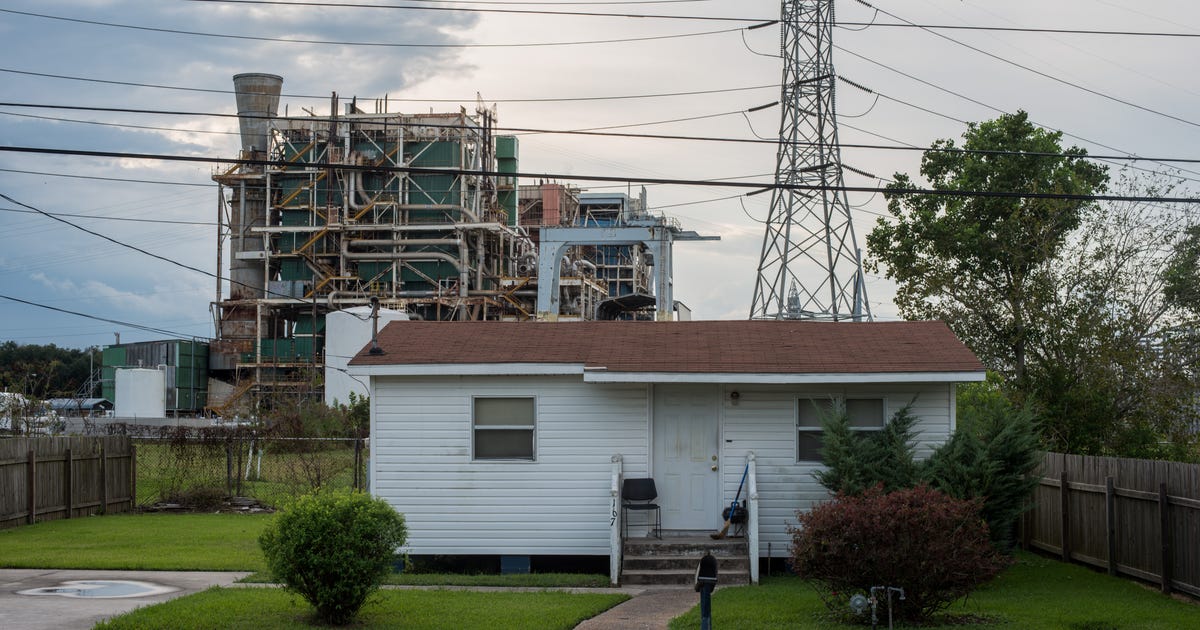
Time and again, studies have shown that people of color in the US are exposed to much higher levels of fine-particulate air pollution than their white counterparts are. It’s an injustice documented by “a mountain of evidence,” as a 2021 New York Times report says.
And on Tuesday, a study published in the journal Nature Communications presented information that’s even more troubling.
“Populations living in racially segregated communities not only breathe more fine-particle air pollution, they breathe a form of pollution that is much more concentrated in toxic, cancer-causing compounds,” John Volckens, a Colorado State University engineering professor and co-author of the study, said in a statement.
Those compounds comprise elements like lead, cadmium and nickel and often stem from the same human activities contributing to global warming — industrial work in factories, for instance. They’re also the harmful substances connected to serious health risks other than cancer, like neurological and respiratory damage.
Previously, scientists had focused on figuring out where fine-particulate matter — also called PM2.5 because each particle is less than 2.5 microns in diameter — resides. Such studies have clearly shown PM2.5 permeating places where communities of color are located. And these conclusions illustrated how people of color are breathing in a greater number of particles known to add to the global burden of disease.
Clearly, the situation was already dire. But Volckens and fellow researchers wanted to dig deeper.
They examined the toxic metal components in PM2.5 to understand where the most hazardous type of fine-particulate matter floats in the air — and they specifically included an indicator of racial residential segregation in their analysis.
In other words, the team looked to see whether those extra-hazardous PM2.5 clouds were concentrated in areas called home primarily by people of color.
The results were concerning.
“While concentrations of total fine-particulate matter are two times higher in racially segregated communities, concentrations of metals from anthropogenic sources are nearly 10 times higher,” the study states. The phrase “anthropogenic sources” simply refers to pollution sources originating in human activity.
Connecting the dots, the study also highlights the possibility that known and recorded health disparities in communities of color may be blamed on these populations being exposed to higher amounts of such carcinogenic metals in the air.
“Across the country, people in some racial and ethnic minority groups experience higher rates of poor health and disease for a range of conditions … when compared to their white counterparts,” the US Centers for Disease Control and Prevention says.
That includes diabetes, hypertension, obesity, asthma, heart disease, preterm birth, and notably, in this case, cancer. “These disparities sometimes persist even when accounting for other demographic and socioeconomic factors, such as age or income,” the CDC says.
Defining ‘redlining’
Of the issue as a whole, Volckens said, “this is the unfortunate result of systemic racial and ethnic injustices, such as redlining, that have plagued our nation’s history.”
Redlining nowadays is used to describe many forms of systemic, race-based discrimination in real estate. But in a nutshell, the term is rooted in government homeownership programs created as part of the New Deal in the 1930s. Basically, these programs offered government-insured mortgages for homeowners as an attempt to alleviate some of the economic downfall following the Depression.
But the programs relied on maps that ranked neighborhoods from most desirable to most hazardous — “most hazardous” neighborhoods didn’t get the benefits. And most of those no-benefit neighborhoods were largely populated by Black and immigrant residents.
Fast-forward through the years, and we find that businesses had worked with local zoning officials to use those unfairly drawn, simply segregated maps to decide where to put pollutive operations. Things like industrial plants, major roadways and, in coastal regions, shipping ports. Things directly associated with air pollution, including PM2.5.
And as you might expect, officials weren’t clamoring to put those operations in “most desirable” neighborhoods.
An image showing the New Deal’s redline map of Brooklyn, New York. Various sections are highlighted in different colors.
National Archives and Records Administration, Mapping InequalityIn fact, a study from March, published in the journal Environmental Science and Technology Letters, bluntly demonstrated the link between PM2.5 and redlined areas.
“Findings here highlight that present-day disparities in US urban pollution levels reflect a legacy of structural racism in federal policy-making — and resulting investment flows and land use decisions — apparent in maps drawn more than 80 years ago,” the March study says.
The only silver lining the new study’s researchers were able to find was that some recent regulations on marine fuel oil seem to have reduced the concentration of a toxic metal called vanadium in coastal cities. Those policies also “sharply lessened differences in vanadium exposure by segregation,” the authors write.
“Sweeping environmental cleanups, like the establishment of national clean-fuel standards, not only reduce air pollution nationwide, but also serve to reduce the pollution exposure disparities we see in many segregated communities,” Jack Kodros of Colorado State University and lead author of the study, said in a statement.
A timely realization, with COP27 just around the corner.